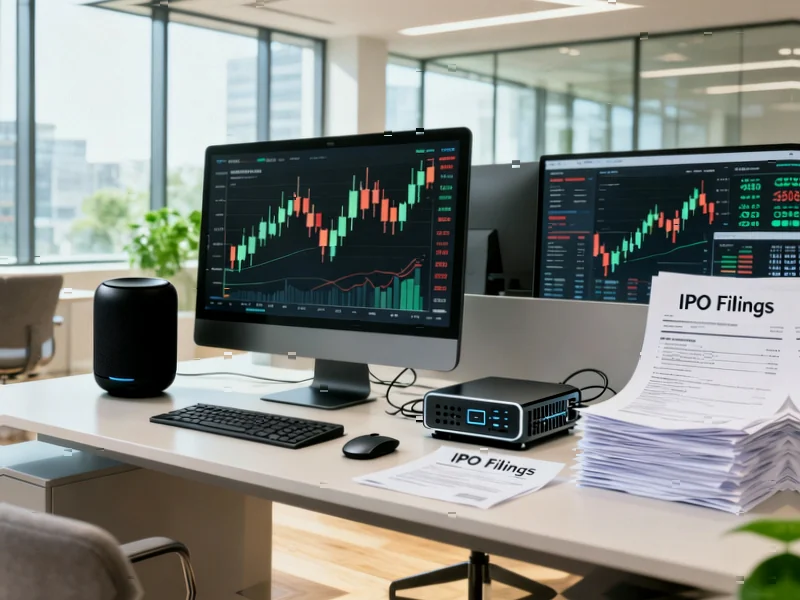According to Ars Technica, OpenAI CEO Sam Altman confirmed during a Reuters livestream that going public “is the most likely path for us, given the capital needs that we’ll have.” Sources familiar with the matter now indicate the ChatGPT maker is preparing for an initial public offering that could value the company at up to $1 trillion, with filings possible as early as the second half of 2026. The potential IPO comes as the company faces mounting losses estimated at $11.5 billion in the most recent quarter, while preliminary discussions suggest OpenAI aims to raise $60 billion at the low end through share sales. Chief Financial Officer Sarah Friar has reportedly told associates the company targets a 2027 listing, though some advisors predict 2026 could be possible. This ambitious financial strategy raises critical questions about the sustainability of OpenAI’s business model.
Table of Contents
The Valuation Paradox: Burning Cash to Build Value
The most striking aspect of this potential IPO is the disconnect between staggering losses and unprecedented valuation ambitions. While traditional companies seek IPOs after achieving profitability or demonstrating clear paths to it, OpenAI appears to be embracing a fundamentally different approach. The company’s massive $11.5 billion quarterly loss reflects the extraordinary costs of training and running advanced AI models like GPT-4 and developing next-generation systems. This burn rate isn’t accidental—it’s the price of maintaining technological leadership in an arms race where competitors like Google, Meta, and Anthropic are spending billions on their own AI infrastructure. The question isn’t whether OpenAI can stop losing money, but whether investors will accept that these losses are necessary investments in what could become the defining technology platform of our era.
Altman’s Trillion-Dollar Infrastructure Bet
Sam Altman has been remarkably transparent about his vision requiring trillions of dollars in AI infrastructure investment, far beyond what even the deepest-pocketed private investors can provide. The IPO represents a strategic shift from venture capital dependence to public market funding at a scale never before seen in technology. As CEO, Altman understands that building artificial general intelligence—if achievable—requires computational resources that dwarf today’s capabilities. Public markets offer not just capital but acquisition currency through stock, enabling OpenAI to potentially absorb smaller AI startups and talent pools that could accelerate their roadmap. This approach mirrors Amazon’s early strategy of prioritizing growth over profits, though at a significantly magnified scale and risk profile.
The Market Reality Check
A $1 trillion valuation would place OpenAI among the most valuable companies in history, comparable to tech giants that took decades to reach such heights. For context, Microsoft reached its first trillion-dollar valuation after 44 years of operation, while Apple took 42 years. ChatGPT‘ explosive adoption created unprecedented hype, but sustaining that momentum through an IPO process will require demonstrating more than viral success. The company must convince public market investors—who tend to be more conservative than venture capitalists—that its current revenue streams from API access, enterprise partnerships, and consumer subscriptions can scale sufficiently to justify both the valuation and continued massive spending. The timing is particularly delicate given increasing regulatory scrutiny of AI companies and growing concerns about AI safety and ethical implications that could impact long-term growth prospects.
Competitive Landscape Intensifies
OpenAI’s path to public markets comes as competition in the generative AI space accelerates dramatically. Google’s Gemini, Anthropic’s Claude, and open-source alternatives are rapidly closing the technology gap, while cloud providers like Microsoft, Amazon, and Google are embedding AI capabilities directly into their platforms. This competitive pressure creates a paradox: OpenAI needs massive capital to maintain its lead, but the very act of going public could reveal strategic vulnerabilities to competitors. Public companies face quarterly scrutiny that could force premature optimization for short-term results rather than long-term breakthroughs. The 2026-2027 timeline gives OpenAI a window to solidify its technological advantage, but also provides competitors with a clear target to aim for in their own development efforts.
Regulatory and Ethical Hurdles Ahead
Beyond financial considerations, OpenAI’s IPO ambitions must navigate an increasingly complex regulatory environment. As a private company, OpenAI could operate with considerable autonomy on safety and ethical decisions, but public shareholders will demand transparency and predictable governance. Recent leadership turmoil and the company’s evolving structure—balancing its original non-profit mission with commercial imperatives—create additional complexity for public market investors accustomed to clearer corporate governance. The company will need to demonstrate that it can manage the profound ethical responsibilities of developing increasingly powerful AI systems while delivering shareholder value—a balance that no technology company has successfully maintained at this scale before.
The Road to 2026: Execution Over Hype
The success of OpenAI’s potential IPO will ultimately depend on execution in the critical years leading to 2026-2027. The company must transition from being a research organization with commercial products to a scalable business with predictable revenue streams. This means expanding beyond developer tools and consumer applications into enterprise solutions that can generate the recurring revenue public markets demand. More importantly, OpenAI must demonstrate that its massive spending is creating durable competitive advantages—whether through proprietary technology, network effects, or ecosystem lock-in—that can withstand the inevitable competitive and technological disruptions ahead. If successful, this IPO could redefine how transformative technologies are funded and scaled. If not, it could become a cautionary tale about the limits of ambition in the face of economic reality.
Related Articles You May Find Interesting
- Obsidian’s 1.10.2 Update Fixes Critical Workflow Bugs
- Cascadia’s High-Speed Rail Dream Faces Generational Timeline
- Microsoft’s Premium Xbox Gamble: Strategy Shift or Market Exit?
- Bloom Energy’s AI Power Play: Fueling the Data Center Revolution
- OpenAI’s Aardvark: The Double-Edged Sword of Autonomous Security AI



